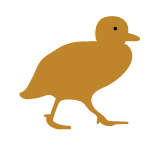Biological research techniques are changing rapidly, and each year we learn about new ways of collecting and analysing large biological datasets. New empirical data often require novel methods of analysis, and large datasets require advanced computational techniques to handle. Quantitative biologists also frequently rely on mathematical and simulation models to explore and understand complex biological processes and patterns. At the heart of quantitative biology is asking the right question, in the right way, with traditional experimental design during data collection being replaced by (i) decisions about how to partition existing datasets and (ii) parameter definitions in simulation models to effectively answer outstanding biological questions. Students will learn about advanced methods in quantitative biology, from study design, reading and writing skills, through to theory and agent-based modelling, mining citizen-science data, analysing of animal tracking data, and using deep-learning method.
Learning Outcomes
Upon successful completion, students will have the knowledge and skills to:
- Describe, present, and critically evaluate analytical methods, models and theories used in published research.
- Develop skills in experimental design when using simulations or analysing existing datasets, including making appropriate assumptions and identifying the core biological measures of interest.
- Identify appropriate approaches for posing questions and designing analyses when testing hypotheses using automated data collection method.
Other Information
Please email rsb.studentadmin@anu.edu.au to request a permission code to enrol in this course
Indicative Assessment
- Presentation of a study from the primary literature (10) [LO 1]
- Short quizzes on weekly topic or pre-class reading (25) [LO 1]
- Experimental design and modelling project (50) [LO 2]
- Methodological design project (15) [LO 3]
The ANU uses Turnitin to enhance student citation and referencing techniques, and to assess assignment submissions as a component of the University's approach to managing Academic Integrity. While the use of Turnitin is not mandatory, the ANU highly recommends Turnitin is used by both teaching staff and students. For additional information regarding Turnitin please visit the ANU Online website.
Workload
The expected workload will consist of approximately 130 hours throughout the semester including:
- Classroom component which may consist of 1 hour of tutorial style learning and a 3 hour practical session each week (total to approx. 48 hours).
- Approximately 82 hours of self-directed study which will include reviewing/reading materials for quizzes, developing the presentations and the two assessment tasks.
Students are expected to actively participate and contribute towards discussions in class.
Inherent Requirements
No specific inherent requirements have been identified for this course
Requisite and Incompatibility
You will need to contact the Biology Teaching and Learning Centre to request a permission code to enrol in this course.
Prescribed Texts
Nil
Preliminary Reading
Students will be given journal papers to read prior to each practical session, which will form the basis of a quiz in the tutorial session prior to the practical. These are yet to be assigned.
Fees
Tuition fees are for the academic year indicated at the top of the page.
Commonwealth Support (CSP) Students
If you have been offered a Commonwealth supported place, your fees are set by the Australian Government for each course. At ANU 1 EFTSL is 48 units (normally 8 x 6-unit courses). More information about your student contribution amount for each course at Fees.
- Student Contribution Band:
- 2
- Unit value:
- 6 units
If you are a domestic graduate coursework student with a Domestic Tuition Fee (DTF) place or international student you will be required to pay course tuition fees (see below). Course tuition fees are indexed annually. Further information for domestic and international students about tuition and other fees can be found at Fees.
Where there is a unit range displayed for this course, not all unit options below may be available.
| Units | EFTSL |
|---|---|
| 6.00 | 0.12500 |
Course fees
- Domestic fee paying students
| Year | Fee |
|---|---|
| 2025 | $4680 |
- International fee paying students
| Year | Fee |
|---|---|
| 2025 | $6720 |
Offerings, Dates and Class Summary Links
ANU utilises MyTimetable to enable students to view the timetable for their enrolled courses, browse, then self-allocate to small teaching activities / tutorials so they can better plan their time. Find out more on the Timetable webpage.
Class summaries, if available, can be accessed by clicking on the View link for the relevant class number.
Second Semester
| Class number | Class start date | Last day to enrol | Census date | Class end date | Mode Of Delivery | Class Summary |
|---|---|---|---|---|---|---|
| 7528 | 21 Jul 2025 | 28 Jul 2025 | 31 Aug 2025 | 24 Oct 2025 | In Person | View |


